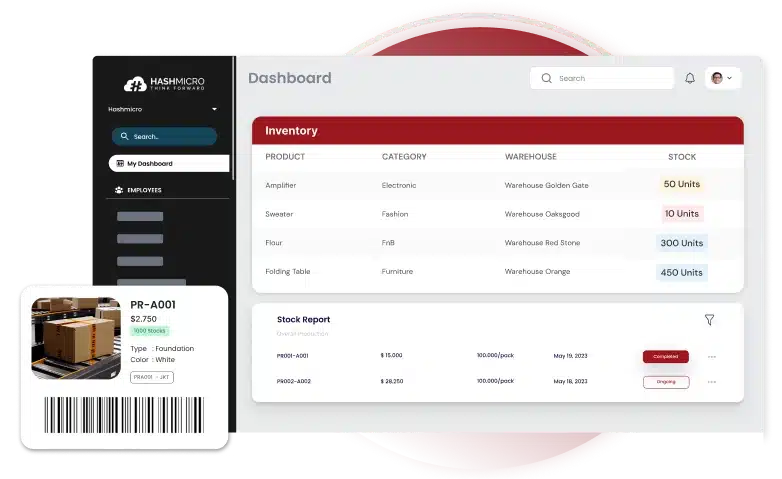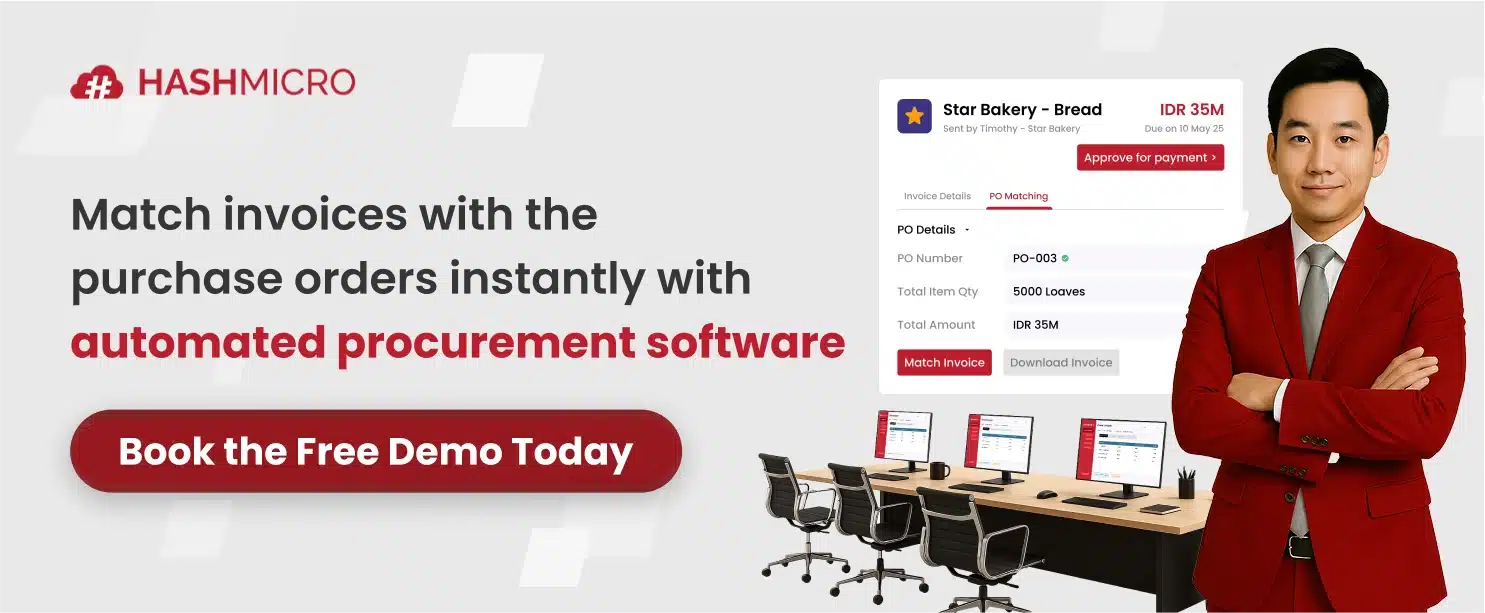Indirect procurement can make up as much as 80% of a company’s purchases, yet it remains largely unmanaged. This lack of attention often results in uncontrolled maverick and tail spend, eating into company revenue.
With indirect procurement growing 7% annually since 2011, neglecting it means missing opportunities to optimize spending. Left unchecked, this significant portion of your budget can cause financial leakage and inefficiencies across the business.
To combat this, businesses must focus on managing indirect spend with better procurement strategies and oversight. Implementing tools for visibility and control can significantly reduce costs and improve operational efficiency.
This article will discuss indirect procurement in detail, including what it does, how it contributes to profitability, and the best practices for maximizing profit while cutting costs effectively.
What is Indirect Procurement?
Indirect procurement, also called indirect spend, is the process of acquiring goods and services necessary for the daily operations of a business but not directly involved in producing its core products or services.
This includes categories like office supplies (e.g., stationery, furniture), IT services (e.g., software licenses, hardware, technical support), professional services (e.g., legal and marketing consultations), facilities maintenance, utilities, and travel management.
While indirect procurement doesn’t directly impact product output, it is crucial to ensuring that business operations run smoothly and employees have the resources they need to function effectively.
The rising importance of virtual goods and services has increased focus on optimizing indirect procurement is a key area for cost reduction and operational efficiency. Ignoring this can result in missed opportunities for sustainable savings and improved profitability.
Key Takeaways
|
Table of Content:
Table of Content

Examples of Indirect Purchasing
Indirect procurement is the backbone that keeps every business ticking, ensuring everything runs smoothly without directly contributing to your final product. Though specific needs differ across industries, here’s a peek at the broad spectrum of indirect procurement:
- Facility Basics: Think rent, utilities (electricity, water, gas), cleaning services, and maintenance essentials that keep your office or workspace functional.
- Employee Essentials: From desks and computers to software subscriptions and office supplies like toner and breakroom snacks, these are the tools your team needs to stay productive.
- Operational Support: Marketing campaigns, travel for meetings or conferences, legal fees, accounting services, and professional training—all these help drive your business forward.
- Tech & Services: Cloud storage, internet services, cybersecurity solutions, and IT support keep your tech infrastructure running like clockwork.
- MRO (Maintenance, Repair, and Operations): Spare parts, tools, and other maintenance items are crucial for keeping your equipment in top shape.
Managing these purchases strategically isn’t just about keeping the lights on but maximizing value. With smart sourcing and savvy negotiations, you can make a big difference to your bottom line while ensuring smooth operations.
Benefits of Indirect Procurement
Indirect procurement might not get the spotlight like direct procurement does, but its influence on business profitability is undeniable. While it doesn’t directly contribute to product creation or service delivery, it plays a crucial role in keeping operations smooth and efficient.
Here are three ways indirect procurement contributes to profitability:
- Cutting Costs: Managing indirect procurement smartly can really pay off. By negotiating better deals, consolidating suppliers, and streamlining processes, businesses can see real savings that directly boost their bottom line.
- Boosting Efficiency: Streamlining your procurement isn’t just about saving time. It frees up resources, allowing your team to focus on what really matters—driving growth and revenue, not chasing down office supplies or services.
- Reducing Risk: It’s all about being prepared. By spreading out your supplier relationships, staying compliant, and avoiding over-reliance on a single vendor, you can protect your business from unexpected hiccups that could disrupt operations.
Direct Procurement vs. Indirect Procurement
The main distinction between direct procurement vs indirect procurement lies in the role each serves. Direct procurement focuses on obtaining the key supplies that are integral to producing and delivering your core products to customers.
Indirect procurement, meanwhile, handles the acquisition of supporting goods and services that help keep operations running but aren’t directly tied to what you sell.
Because of these differing roles, the processes for managing direct and indirect procurement vary. You’ll need to adjust your approach to each to ensure both are handled effectively.
Here’s a breakdown of the key differences between direct and indirect procurement, presented as a list with explanations:
1. Purpose and Focus
- Direct Procurement: Involves acquiring essential materials that directly impact the production of goods or services your business offers. These are critical supplies—without them, operations cannot continue.
- Indirect Procurement: Focuses on non-core supplies that support day-to-day operations but aren’t directly tied to the production process. These are more about keeping the business running smoothly, like office supplies, IT services, and maintenance.
2. Customer-Vendor Relationships
- Direct Procurement: Establishing long-term, sustainable relationships with suppliers is vital. This ensures a stable supply chain that can handle potential disruptions. Contracts, vendor management, and minimum order quantities are common practices.
- Indirect Procurement: Relationships are more transactional and less dependent on long-term commitments. Vendors for indirect supplies are often replaceable, and flexibility in timing and alternatives is typical.
3. Strategic Sourcing and Management
- Direct Procurement: Requires a more strategic approach to sourcing. Building strong, reliable vendor relationships is necessary to secure essential supplies that the business relies on.
- Indirect Procurement: Less strategic management is needed. You can often create a vendor shortlist and engage them on a more ad-hoc basis, without needing to worry as much about long-term stability.
4. Planned vs. Spontaneous Spending
- Direct Procurement: Involves careful planning to ensure a continuous supply of critical materials. Businesses often plan purchases in advance and allocate specific budgets to avoid supply chain disruptions.
- Indirect Procurement: Often more reactive and spontaneous. It’s difficult to predict the exact demand for indirect supplies, so purchases are typically made as the need arises, with less rigid budgeting and planning.
5. Impact on Business Operations
- Direct Procurement: Directly affects your ability to deliver products or services to your customers. Without these supplies, the core operations can’t function.
- Indirect Procurement: Supports the business but doesn’t directly impact the product or service output. While important, delays or changes in indirect procurement are often manageable without major disruptions.
6. Inventory Management Focus
- Direct Supplies: Managing inventory for direct supplies is crucial, as it involves acquiring, storing, and planning for materials that are integral to the production process.
- Indirect Supplies: Inventory management for indirect supplies is typically less structured. These supplies are often unplanned, so there is no long-term strategy for managing their inventory.
Indirect Procurement KPIs
To keep your indirect procurement strategy on point, tracking key KPIs is essential. With the right digital procurement software, you can get full visibility into spending patterns and behavior, giving you a clear picture of where your money is going.
Here are some must-watch KPIs to help guide your procurement efforts:
- Cycle times and costs: Keep tabs on how long your procurement processes take and the costs involved, helping you spot any bottlenecks or inefficiencies.
- Savings and cost reductions: Monitor how much you’re saving through smarter purchasing decisions—this is the real proof that your strategies are working.
- Cost avoidance: Measure your ability to sidestep unnecessary expenses, preventing costs from creeping up where they shouldn’t.
- Procurement ROI: Evaluate how much value your procurement activities are generating compared to the resources you’re investing.
- Metrics related to vendors, such as supplier spend, price fluctuations, and contract adherence, play a crucial role in keeping rogue spending in check.
With these KPIs in hand, you’ll see exactly where your procurement system shines and where improvements are needed. This clarity helps you decide whether to optimize your current platform or explore new procurement management software to take your procurement strategy to the next level.
Indirect Procurement Challenges
Indirect procurement comes with its own set of challenges, especially when it involves managing services and non-core supplies. Here’s a look at some of the common pitfalls:
- Supplier Overload: With so many vendors and categories to manage, it’s easy to feel buried under contracts and purchase orders. Keeping track of everything can become a logistical nightmare without a solid system in place.
- Lack of Visibility: Often, decision-makers aren’t looped in early enough, leaving gaps in communication. This can lead to delays, missed opportunities, and unnecessary complications down the line.
- Uncontrolled Spending: When multiple people are involved in approving purchases, it becomes tricky to see the full picture of where the money is going. This can lead to overspending and a lack of accountability.
- Revealing Budgets Too Soon: Letting vendors know your budget early in the game can backfire. They’ll adjust their pricing to fit what you’re willing to spend, leaving less room for negotiating better deals.
- Rushed Decisions: Vendors push to close deals quickly, but rushing through the procurement process often means sacrificing the best terms. Without careful consideration, you could end up paying more than necessary.
- Premature Vendor Selection: Announcing your shortlisted vendors too early can weaken your negotiation position. If they know they’re the only option, they’re less likely to offer favorable terms.
Navigating these challenges requires a careful approach, but with the right strategies, you can avoid the pitfalls and optimize your indirect procurement process.
Best Practices of Indirect Procurement
Success in indirect procurement isn’t just about cutting costs. Rather, it also means keeping spending in check, improving visibility, managing facilities better, and building stronger supplier relationships. So, how do you make sure that your indirect procurement goes smoothly with minimal problems?
Here are 6 tips on best practices for efficient indirect procurement:
1. Focus on visibility
One big issue with procurement is that it’s often fragmented, with purchases happening without full approval. The key to fixing this is boosting visibility into all spending, which helps you spot inefficiencies and find ways to optimize.
2. Tidy up the data
Indirect spending often comes from all over the place—different formats, different departments—which can get messy fast. Cleaning up your data makes it easier to track, analyze, and keep everything consistent, giving you better control.
3. Get strategic about sourcing
Take a good look at your contracts and figure out where you can save. Then, work with your suppliers to make those savings happen. It’s all about aligning your efforts with your company’s goals and creating clear benchmarks for success.
4. Rethink your supplier base
A big part of the job is negotiating contracts, communicating with vendors, and monitoring their performance. Make sure spending is done ethically and sustainably while keeping those relationships strong.
5. Educate your team
Since employees are the ones actually making purchases, they need to be in the loop. Clear, simple policies and training go a long way in helping them follow the process and boost procurement efficiency. Good software can even help with training through built-in resources.
6. Use digital tools
Automation and cloud-based procurement software can make the entire process smoother. You’ll reduce errors, improve visibility, and get more accurate data. Plus, having an easy-to-use dashboard means anyone on the team can monitor spending and see cost-saving opportunities.
Enhance Indirect Procurement’s Effectiveness with Procurement Software
Tackling the complexities of indirect procurement takes a mix of smart strategy and cutting-edge technology. That’s where HashMicro procurement software comes in.
As a leader in cognitive procurement, HashMicro has crafted advanced software solutions that give businesses the insights and tools they need to stay on top of their indirect spend. With HashMicro’s expertise, you can navigate the challenges of managing indirect procurement easily and confidently.
For managing indirect procurement, several features of HashMicro’s purchasing software stand out as game-changers:
- Vendor Portal: Say goodbye to messy email chains and back-and-forth phone calls. This digital system lets you handle negotiations and procurement with vendors smoothly and efficiently, all in one place.
- Automatic Vendor Rating: Want to know which vendors consistently deliver the best value? This feature automatically rates vendors on key factors like punctuality, pricing, and service quality, so you can make smarter decisions.
- Cost Savings Tracking and Reporting: Keep a close eye on your savings. By tracking the difference between budgeted and actual spending, you’ll get clear insights into how much you’re saving on those indirect purchases.
- Budget Tracking & Limit Per Purchase: Indirect procurement often involves lots of smaller purchases. With this tool, you can easily monitor budgets and set spending limits, making sure everything stays on track and within budget.
- KPI Target Per Purchaser: This feature makes it easier to keep your procurement team on point. It allows you to set and track specific goals, such as cost savings and successful negotiations.
These features make managing indirect procurement simpler, smarter, and more efficient without overwhelming your team.
Conclusion
Indirect procurement covers the essential services and supplies that keep your business running smoothly but aren’t directly tied to your products. From office supplies to IT services, managing these areas well can improve cost control for long-term business success.
For Singaporean businesses, HashMicro’s procurement software is designed to simplify your indirect procurement process. With smart tools that enhance visibility, automate vendor management, and streamline negotiations, you’ll have everything you need to take control of your spending and drive savings effortlessly.
When it comes to optimizing procurement, HashMicro gives you the edge with powerful tech and local support. Their solutions help you manage procurement with ease, improve decision-making, and ensure you’re always getting the best value from your suppliers.
What are you waiting for? Try out the free demo and see how effective this procurement software can be for your company!
FAQ About Indirect Procurement
-
What are indirect costs in procurement?
Indirect spend, also known as indirect cost, refers to expenditures that help keep a business operational behind the scenes. Indirect procurement typically covers internal resources like office supplies, equipment, shipping fees, wages, and other expenses that support day-to-day operations, team processes, and workflows within the company.
-
What is the indirect purchase order process flow?
The indirect procurement process involves acquiring goods and services that don’t directly contribute to the final product. These may include office supplies, equipment, travel expenses, consultancy services, software, and utilities.
-
Is marketing indirect procurement?
Marketing expenses are considered part of indirect spend, as they involve goods and services unrelated to manufacturing products or core business activities.
-
What are the metrics for indirect procurement?
Indirect procurement evaluates cost metrics to measure performance. The focus is on managing expenses and preventing unnecessary spending. Common KPIs are cost savings, cost avoidance, and cost reduction.
























































